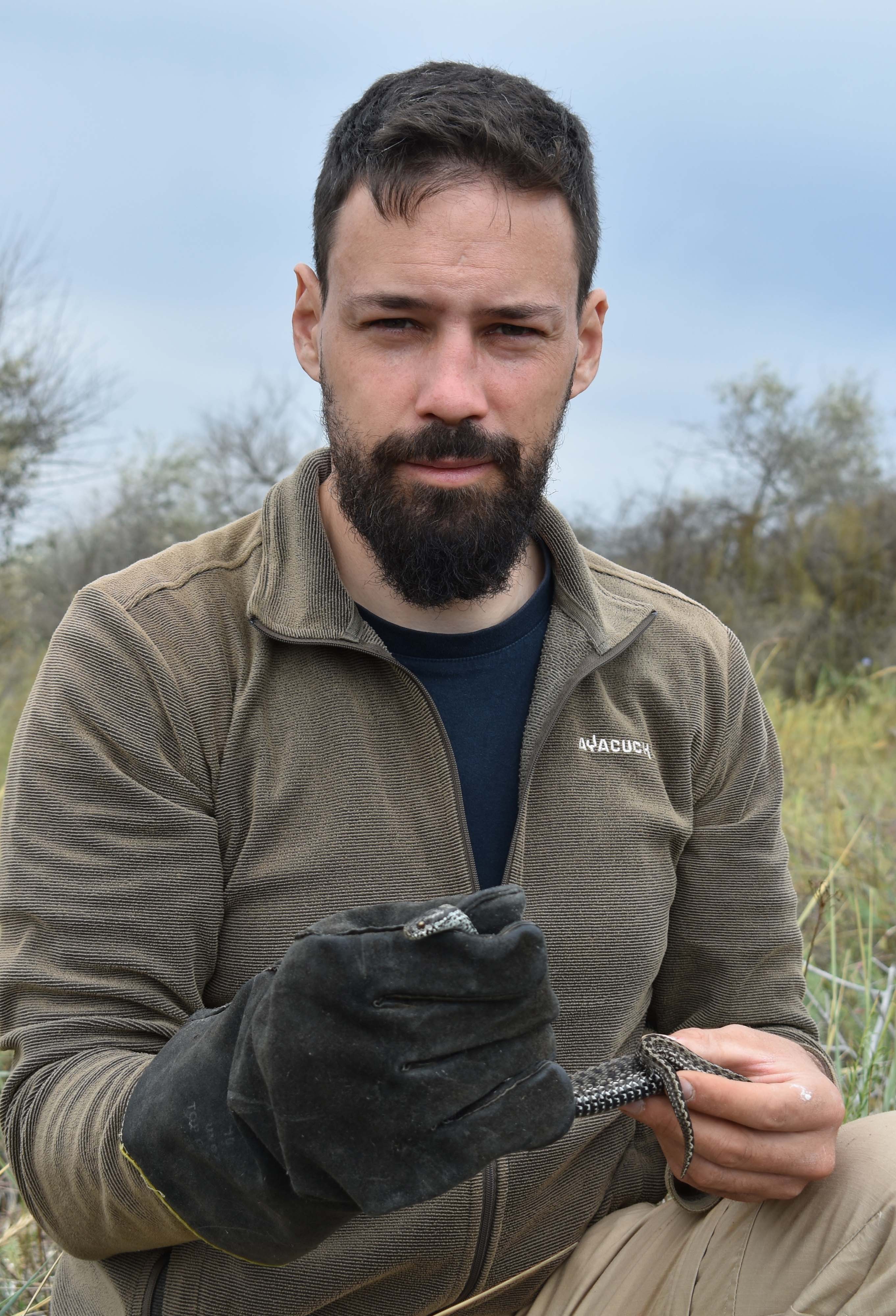Dr Bálint Üveges

Affiliations
Links
- https://www.researchgate.net/profile/Balint-Ueveges
My ResearchGate profile. - https://twitter.com/BalintUveges1
My Twitter profile.
Overview
I am mainly interested in evolutionary ecology of poisonous and venomous animals, and especially in investigating how environmental factors, such as predation pressure drive their evolution. Amphibians and venomous snakes in particular, are especially close to my heart. I received my PhD from the University of Debrecen, Hungary in 2019. As a post-graduate student I have studied phenotypic plasticity of chemical defences in common toads (Bufo bufo) using lab and mesocosm based experiments. Currently, I am working with Dr Wolfgang Wüster on a project, which aims to investigate the relative role of diet and anti-predator defence in the evolution of meadow viper (Vipera ursinii) venoms.
For updates on my research you can follow me on Researchgate and Twitter.
Research
Integrating the role of diet and defence in the evolution of snake venoms
Venoms constitute a key part of the interface between many animals and their environment, and are used primarily as chemical weapons for antagonistic encounters with prey or predators. The venom of snakes is extremely variable and the reasons for this variation have been the focus of intensive research. Adaptation of venom to diet appears to be a key driver of venom composition in many groups of snakes, however, snakes also use their venoms in self-defence. Although widely acknowledged, there have been few efforts to specifically test for evidence of selection for a defensive function of snake venom.
A key prediction for a defensive venom is that it should cause rapid, severe pain to repel an attack before the snake is injured. Evolution of such a venom was recently demonstrated in the case of spitting cobras. Also, in a recent survey of pain development after snakebites in humans, there were multiple examples of painful bites from snakes that feed on weakly defended prey and are not generally regarded as highly lethal (e.g. Causus spp., Demansia spp.). This suggests that, at least in some cases, there may be a trade-off between a foraging function, selected to rapidly overpower and immobilise prey, and a defensive function, selected to rapidly deter predatory attacks and allow snake survival. Under this hypothesis, evidence for a defensive role should be most prominent in species that feed on weakly defended prey, and are thus under relaxed selection for rapid prey immobilisation.
The aim of our project is to test this hypothesis and understand the trade-off between defence and foraging function on the example of European meadow vipers (Vipera ursinii, V. renardi and V. graeca). These small vipers generally specialise on weakly defended arthropods (mainly orthopterans) and are heavily preyed upon by carnivores and predatory birds. This project is funded by the Leverhulme Trust.
Research areas and keywords
Keywords
- QH301 Biology - Ecology, Evolution, Herpetology, Amphibians, Reptiles, Venom, Poison, Toxin
Education / academic qualifications
- Professional (2019 - 2021)
- PhD , Environmental factors shaping the variability of amphibian chemical defences (2012 - 2019)
- PhD (2008 - 2011)
- MSc , Heritability analysis of the head scalation of Hungarian meadow vipers (Vipera ursinii rakosiensis) (2003 - 2008)
Research outputs (18)
- Published
Predation on the Endangered Hungarian Meadow Viper in Pastures and Hayfields: Insights From Plasticine Models
Research output: Contribution to journal › Article › peer-review
- Published
Voluntary thermal maximum of grassland vipers (Vipera spp.): environmental drivers and local adaptation
Research output: Contribution to journal › Article › peer-review
- Published
Does The Glucocorticoid Stress Response Make Toads More Toxic? An Experimental Study on The Regulation of Bufadienolide Toxin Synthesis
Research output: Contribution to journal › Article › peer-review

